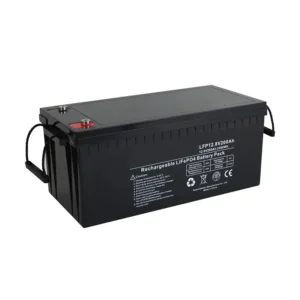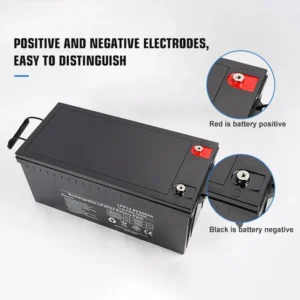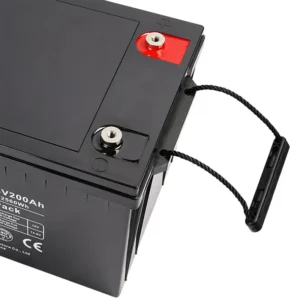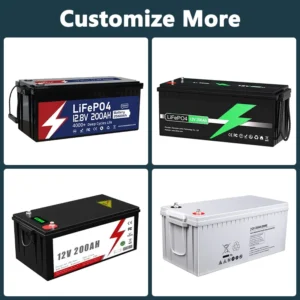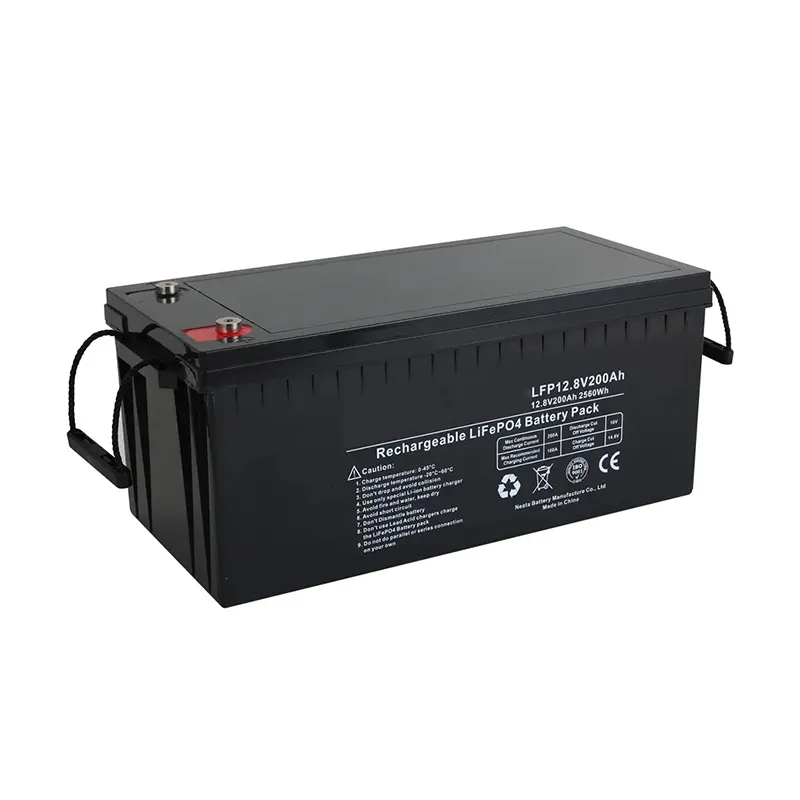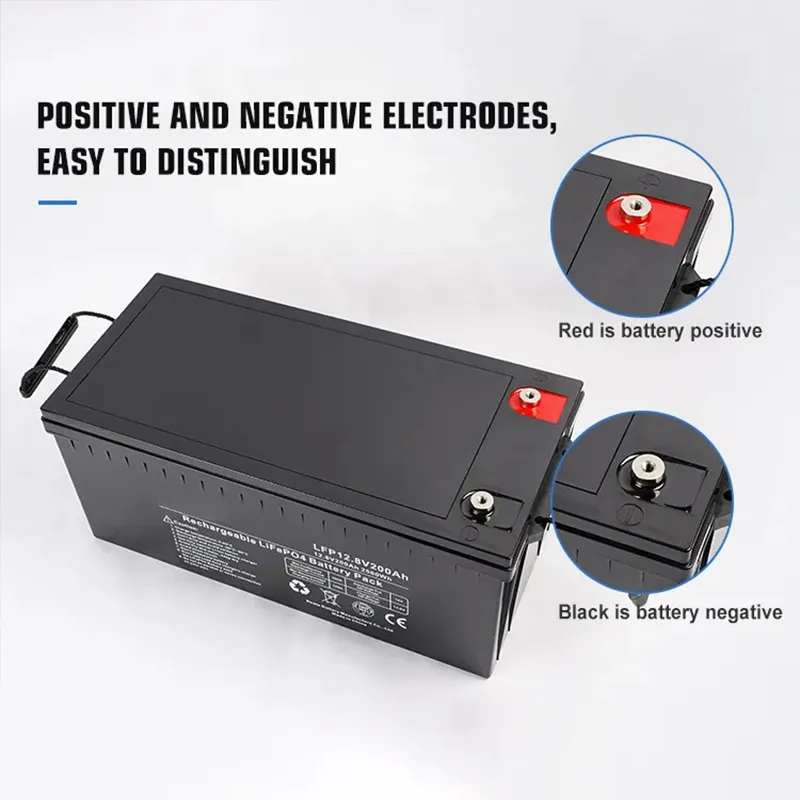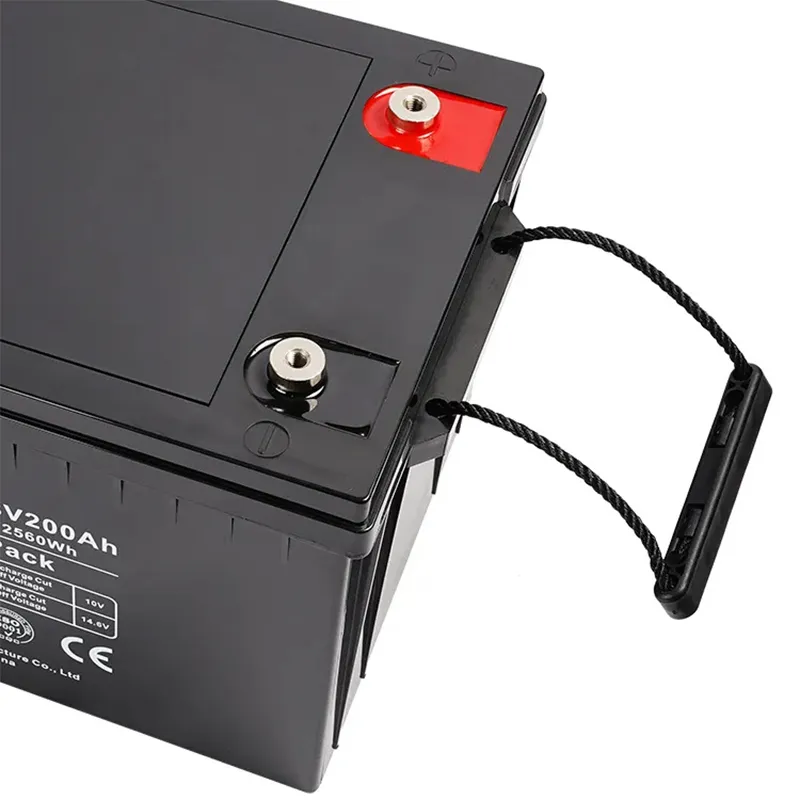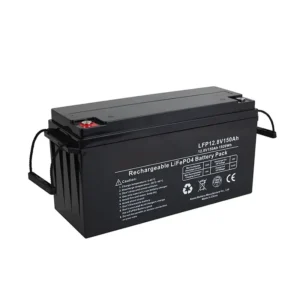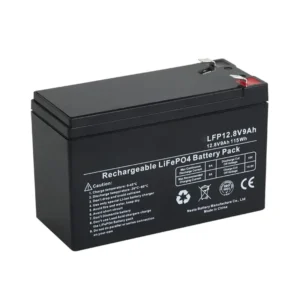12.8V 200Ah LiFePO4 Battery LFP12200
Features:
- Long lifespan for durability and reliability.
- Advanced safety features for protection against overcharging and short circuits.
- Versatile applications including solar energy storage, electric vehicles, and more.
- Stable voltage output for consistent power delivery.
Parameters
| Model | LFP12200 |
| Rated Capacity | 200Ah |
| Rated Voltage | 12.8V |
| Energy | 2560Wh |
| Standard Charge Current | 50A |
| Max. Charge Current | 100A |
| Charge Cut Off Voltage | 14.6V |
| Standard Discharge Current | 50A |
| Max. Continuous Discharge Current | 150A |
| Discharge Cut Off Voltage | 10V |
| Max. Pulse Discharge Current | 300A |
| Charge Temperature | 0 to 45ºC |
| Discharge Temperature | -20 to 60ºC |
| Storage Temperature | 0 to 40ºC |
| Dimension (L*W*H) | 521*238*219mm |
| Weight | 22kg |
CAN'T FIND WHAT YOU WERE LOOKING FOR?
FAQ
The duration of a 12V 200Ah lithium battery depends on the power consumption of the connected devices. To calculate the approximate runtime, divide the battery capacity (in Ah) by the power consumption (in amps) of the devices. For example, if the connected devices consume 10 amps, the battery can last for approximately 20 hours (200Ah ÷ 10A = 20 hours). Keep in mind that this is an estimation and may vary based on factors such as battery efficiency and usage conditions.
The amount of solar panels required to charge a 200Ah battery depends on several factors, including the efficiency of the solar panels, available sunlight, and the charging time required. As a rough estimate, you would need a solar panel array with a total wattage output of at least 2000W (assuming a nominal voltage of 12V). However, it’s important to note that this is a simplified calculation and additional factors such as charging controller efficiency and battery charging losses should be considered for a more accurate estimation. It’s recommended to consult with a solar system professional to determine the specific requirements based on your location and energy needs.
The size of the inverter needed for a 200Ah battery depends on the power requirements of the devices you plan to run. To determine the appropriate inverter size, you should consider the total wattage of the devices you want to power simultaneously.
As a general rule of thumb, you can use the formula:
Total Wattage = Voltage (V) x Current (A)
For example, if your devices have a total power consumption of 1000 watts and you have a 12V battery, you would need an inverter that can handle at least 83.3 amps (1000 watts divided by 12 volts).
Keep in mind that it’s recommended to choose an inverter with a slightly higher capacity than your calculated value to ensure it can handle power surges and provide a stable power supply. Additionally, consider the inverter’s efficiency, surge power capacity, and any specific requirements of your devices.
The size of the generator needed to charge a 200Ah lithium battery depends on the charging method and the desired charging time. Here’s a general guideline to help you estimate the generator size:
- Calculate the watt-hours (Wh) required to charge the battery:
Wh = Battery Capacity (Ah) x Battery Voltage (V) - Determine the charging time: How many hours do you want to fully charge the battery?
- Divide the watt-hours by the charging time to get the average charging power in watts (W).
- Since generators are rated in terms of kilowatts (kW), divide the average charging power by 1000 to convert it to kilowatts.
For example, let’s assume a 12V battery and a desired charging time of 4 hours:
Battery Capacity = 200Ah
Battery Voltage = 12V
Wh = 200Ah x 12V = 2400Wh
Average Charging Power = 2400Wh / 4 hours = 600W
Generator Size = 600W / 1000 = 0.6kW or 600W
In this case, you would need a generator with a capacity of at least 600W (0.6kW) to charge the 200Ah lithium battery in 4 hours. Keep in mind that it’s recommended to choose a generator with a slightly higher capacity to account for efficiency losses and provide a stable power supply.

